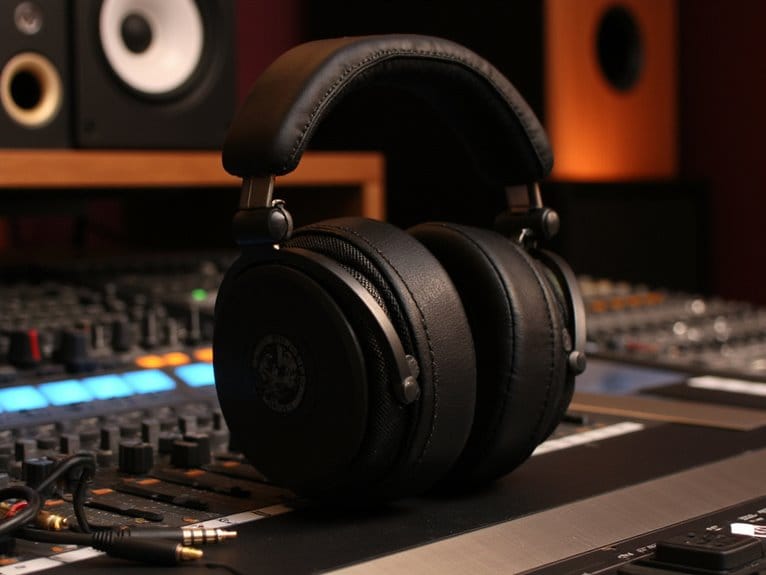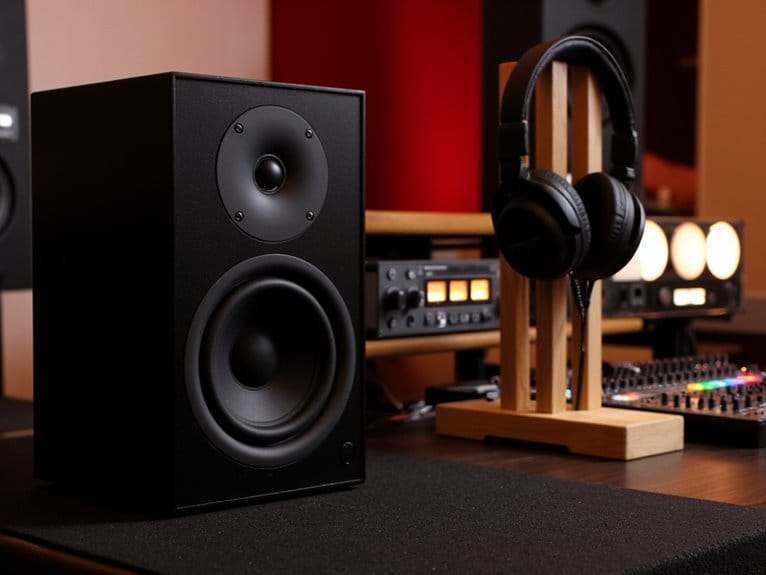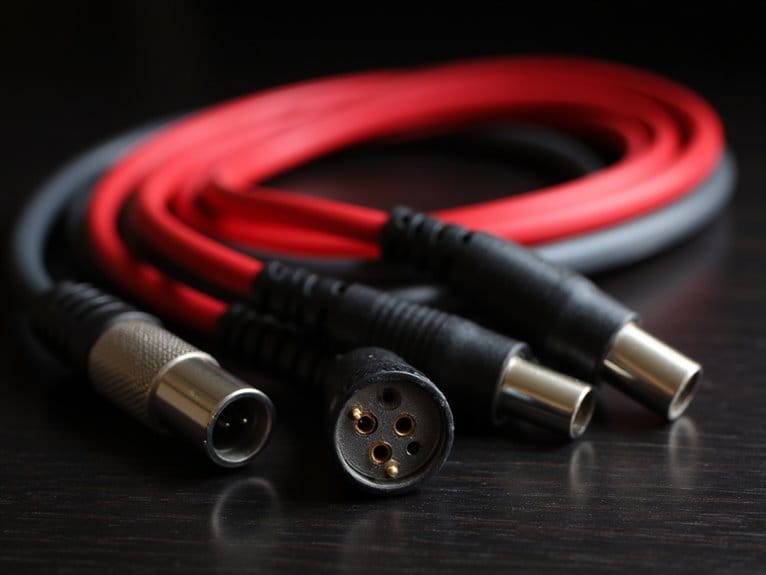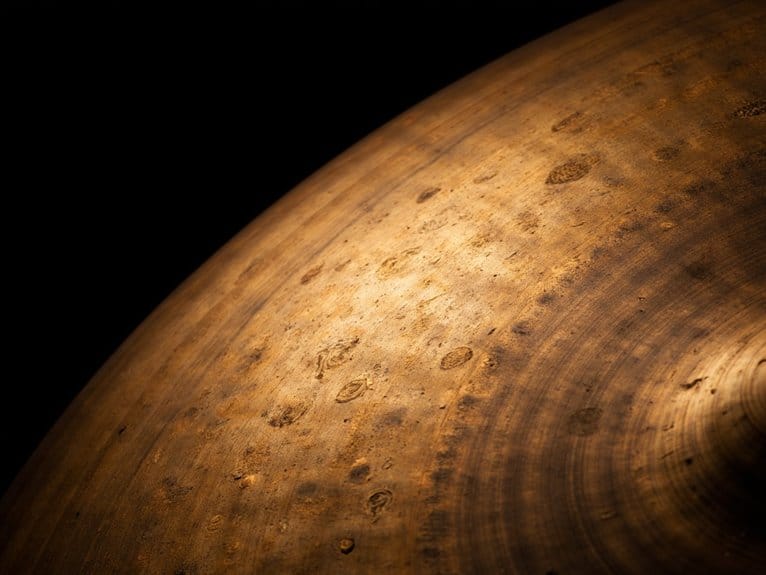Analog vs. Digital Effects: When Each Sounds Better
You’ll choose analog effects when you want harmonic warmth and natural saturation that enhances blues, rock, and jazz with even-order harmonics and organic compression. Digital effects excel when you need surgical precision for EDM, pop, and layered productions where transparency and repeatability matter most. Genre dictates your choice-analog adds character through subtle distortion and frequency thickening, while digital maintains signal integrity across multiple passes. Understanding these sonic signatures helps you make informed decisions for your specific musical goals.
We are supported by our audience. When you purchase through links on our site, we may earn an affiliate commission, at no extra cost for you. Learn more.
Notable Insights
- Analog effects excel in classic rock, blues, and jazz where harmonic distortion and natural compression enhance musical warmth and character.
- Digital effects shine in EDM and modern pop, providing precise layering capabilities and transparent sound reproduction without cumulative noise.
- Analog gear adds desirable even-order harmonics and saturation that thicken low-end frequencies and create emotionally engaging sonic textures.
- Digital processing offers consistent performance, lookahead limiting, and advanced editing features like non-destructive automation and instant recall.
- Hybrid approaches work best for techno and synthwave, combining analog warmth with digital precision for optimal sonic flexibility.
The Warmth Factor: Why Analog Delivers Natural Character
When you’re diving into the world of audio effects, there’s something almost magical about the way analog gear transforms your sound. I’ve spent countless hours trying to understand exactly what creates that elusive “warmth” everyone talks about.
The secret lies in harmonic distortion, which adds resonant harmonics that your ears find naturally pleasing, particularly those even-order harmonics that create sonic richness without harshness. Unlike digital processing’s clinical precision, analog circuits introduce subtle nonlinearities and saturation effects that thicken your low-end frequencies while gently compressing transients.
This continuous signal processing preserves natural fluctuations that discrete digital sampling can miss, creating that full-bodied, lush texture that makes your recordings feel more organic and emotionally engaging. While multi-effects pedals offer incredible convenience and variety, many guitarists still gravitate toward analog circuits for their inherent musical character. The Chorus Guitar Pedal with BBD circuitry exemplifies this preference, delivering vintage chorus tones through studio-grade analog circuitry that enhances single-coil pickups and adds depth to humbuckers. Analog systems naturally avoid the aliasing distortion that can occur when digital systems encounter frequencies above their Nyquist limit. The physical media itself becomes part of the sonic equation, as components like tubes, transformers, and capacitors each contribute their own sonic fingerprint to the final output.
Digital Precision: Clean Processing for Modern Production
Three decades of digital evolution have revolutionized audio processing in ways I couldn’t have imagined when I first started working with effects. While analog purists might cringe, there’s no denying that digital precision offers capabilities that simply don’t exist in the hardware domain.
You’re getting signal integrity that maintains consistency across thousands of playbacks, something my vintage compressors can’t promise after years of component drift. The dynamic responsiveness in modern digital limiters actually anticipates incoming audio through lookahead processing, enabling brickwall limiting that would be physically impossible in analog circuits.
When you’re mixing genres demanding sonic transparency like electronic or pop, digital effects preserve every nuance without introducing the cumulative noise that analog chains inevitably add to your signal path.
Genre Preferences: Matching Sound to Musical Style
How dramatically does musical genre influence your choice between analog and digital effects?
I’ve found that genre evolution dictates whether you’ll reach for vintage warmth or pristine precision, and understanding these preferences can transform your productions.
Classic rock, blues, and jazz thrive on analog’s natural harmonic distortion and compression, while EDM and modern pop demand digital’s surgical accuracy and complex layering capabilities.
Electronic genres showcase incredible sonic diversity, with techno producers combining analog synth warmth alongside digital’s rhythmic precision, and synthwave artists using analog emulation to capture that essential 1980s nostalgia.
Your genre choice determines your sonic palette:
- Analog warmth breathes life into folk, country, and soul recordings
- Digital precision enables the tight timing modern trap and pop require
- Hybrid approaches give indie artists nostalgic textures with contemporary clarity
Workflow Considerations: Creative Control vs. Technical Flexibility
Beyond genre preferences, your daily creative workflow becomes the battlefield where analog’s tactile immediacy clashes with digital’s surgical precision. I’ve discovered that this choice fundamentally shapes how you approach music creation.
When you’re twisting physical knobs on analog gear, the hands-on engagement experience creates intuitive connections that often spark unexpected creative decisions, though you’ll sacrifice the instant recall capabilities that make digital workflow optimization so appealing.
Digital systems offer non-destructive editing, unlimited automation, and collaborative session sharing that streamline professional production timelines, yet the GUI-based interface can distance you from that visceral connection to your sound. The cost implications between these approaches remain significant, as analog equipment requires substantial upfront investment while digital tools offer professional capabilities at a fraction of the hardware price.
I’ve found hybrid setups provide the best compromise, delivering analog’s inspiring tactile control alongside digital’s technical flexibility and recall precision.
Long-Term Performance: Durability and Maintenance Reality
While workflow considerations shape your daily creative process, the gear you choose today will either become a reliable studio companion or an expensive maintenance headache over the coming years. I’ve learned this lesson through both triumphant long-term partnerships and costly equipment failures.
Your equipment choices today determine whether you’ll have a trusted creative partner or a costly burden demanding constant attention tomorrow.
The durability comparison between analog and digital effects reveals stark differences in long-term ownership costs. Digital units excel through solid-state components, firmware updates, and resistance to environmental factors, while analog gear battles component drift, calibration requirements, and mechanical wear.
Consider these maintenance challenges you’ll face:
- Analog capacitors and potentiometers degrade over time, requiring expensive component replacement and specialized repair knowledge.
- Digital effects maintain consistent performance without calibration drift, reducing your studio downtime considerably.
- Analog tape machines and tube preamps demand regular bias adjustments, cleaning, and consumable replacements that digital processing eliminates entirely.
On a final note
You’ll find that choosing between analog and digital effects isn’t about finding the “correct” answer, but rather discovering what serves your music best. Trust your ears when they tell you that vintage tube saturation adds magic to your vocals, or when pristine digital reverb fits your electronic production perfectly. Your creative vision should drive these decisions, not industry trends or gear snobbery that frankly doesn’t matter.







